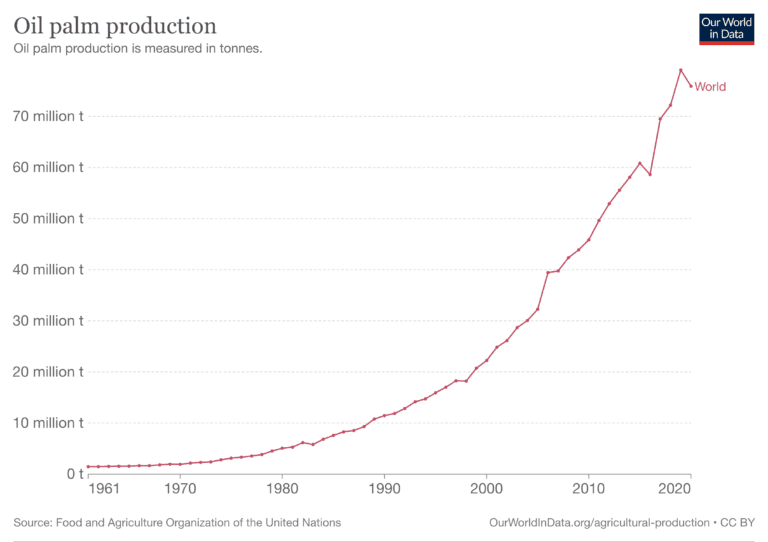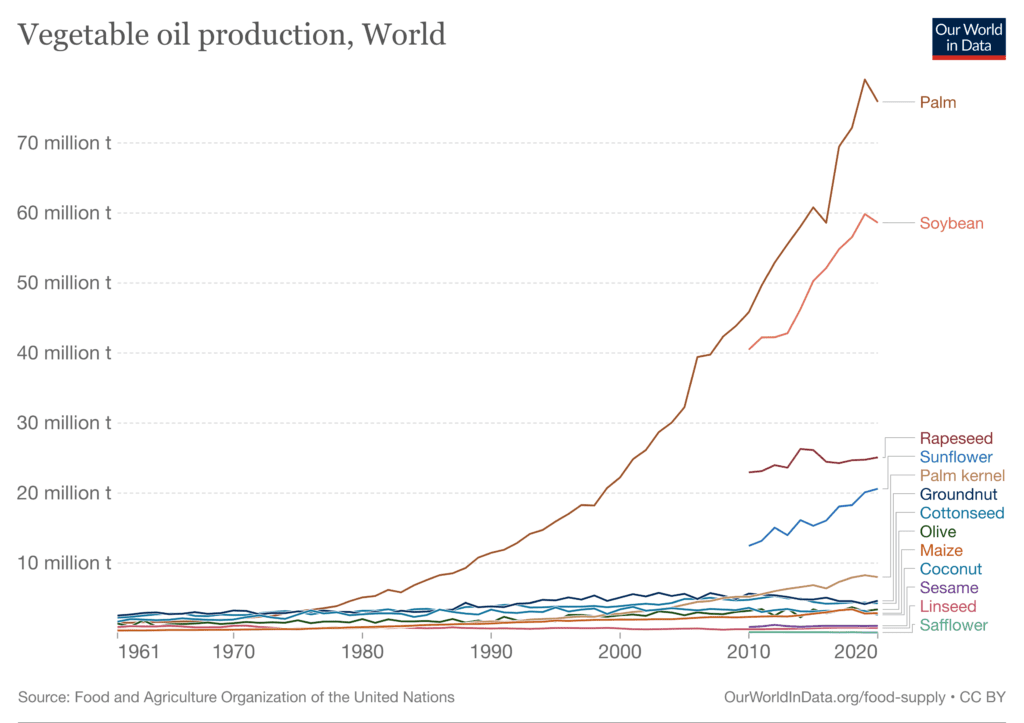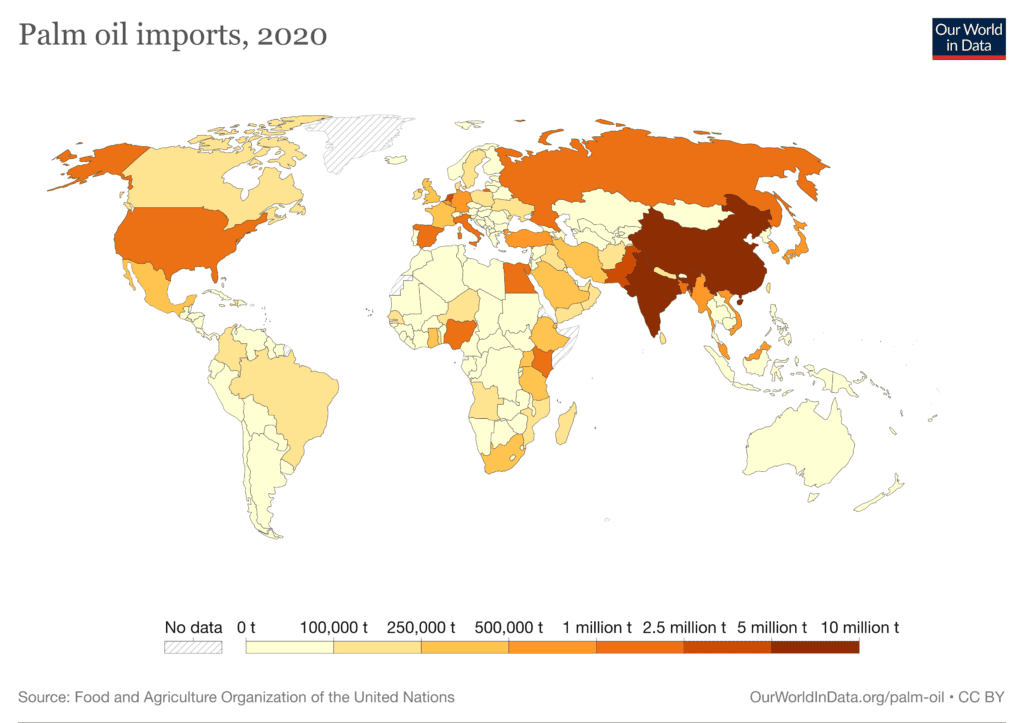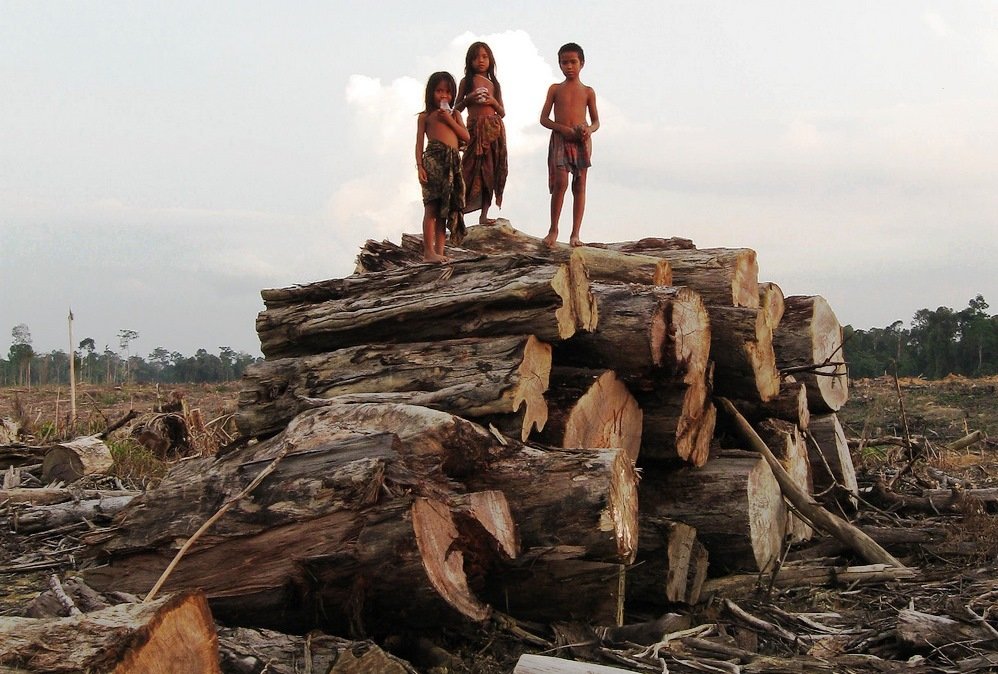|
Getting your Trinity Audio player ready...
|
Summary
- Palm Oil is a globally significant commodity. The production of Palm Oil is across the Tropics, but focussed on SE Asia. The main importers of Palm Oil are China and India
- Palm Oil production is a concern because it has helped drive unsustainable deforestation, abuses of human rights and wider ecological issues.
- Across Malaysia and Indonesia 40% of the plantations are family owned. These families are under pressure because the younger generation don’t want to work in the fields. This exacerbates the labour shortages and the skills and knowledge leakage, which in turn causes further ecological, societal and economic harm.
In order to make Palm Oil sustainable, we and our partners believe in the digitalisation of the industry. But not in a way that merely evolves the present workflows. We see a disruption that is Tree and Farmer-centric, that empowers the family farm with cutting edge technology that aids them in their goals to create a sustainable and less harmful way of life. We can apply Earth Observations to each tree and each fruit in order to maximise the use of earth’s resources.
Palm Oil is Massive

When consumers in the west think about Palm Oil they typically associate it with unsustainable practices, deforestation, child labour maybe and orangutans being made homeless. The British supermarket chain Iceland even planned advertising around the problem in 2018
https://www.youtube.com/watch?v=oA10-oZi4Xc
Palm Oil is ubiquitous. From ice-cream and crisps through to beauty cosmetics and bio-fuel, it is estimated that each human on the planet consumes 8kg of it a year. The foaming agent in almost all soaps and shampoos are made from Palm Oil. Plantations to produce it cover 10% of the world’s cropland, production quadrupled from 1995-2015 and will quadruple again until 2050. World production will be over 240m tonnes.

Palm oil is a miracle crop for many industries, it is incredibly stable in it’s application, but also it is by far the highest yielding. Palms can produce up to 20 times as much oil per hectare as other alternatives. Therefore, despite it being seen by the majority of consumers as being bad for the environment, (41% of people thought palm oil was ‘environmentally unfriendly’, compared to 15% for soybean oil; 9% for rapeseed; 5% for sunflower; and 2% for olive oil. 43% also answered ‘Don’t know’, meaning that almost no one thought it was good. https://ourworldindata.org/palm-oil ), most don’t know they are consuming it.
The fruits of the Palms, known as the Fresh Fruit Bunches (FFBs) are very high yielding. Therefore you get a lot of oil out of a hectare of land. This means that it can be argued that as the demand for Palm Oil has increased because it can be used in many products and it is by far the best use of that hectare compared to other vegetable oil crops.

68% of Palm Oil is used in foodstuffs. However, this is not a problem of Western Consumer Consciousness. By far the largest consumers of Palm Oil are in Asia. The map above shows China and India, combined population of 2.8bn, or 30% of the global population, is the main market. But as the map shows, consumption and therefore imports is fairly consistent with population size.
85% of the world’s Palm Oil is produced in Indonesia and Malaysia, but it is also produced in Africa and South America.
In Malaysia, for example, there are 6 million hectares of cultivation. A hectare is 100m x 100m, slightly larger than a full football pitch. 60% of this is controlled by larger corporates. 40% is family farmers, with 13% being subsistence farmers.
Because it is high yielding, in the past, it has been easier to clear forest and plant palms than to look to improve yield or quality of the fruits. The work on a Palm Plantation is highly manual, hot, dirty and dangerous. It is difficult for family farmers to convince the younger generation to come into the business. This means that there is a labour shortage. There is a need for over 120k in Malaysia. This is why there are reports of forced child labour in the plantations. https://www.amnesty.org.uk/press-releases/brands-including-kitkat-pot-noodle-and-colgate-toothpaste-implicated-indonesian-palm
Deforestation and Human Rights
So there are two major impacts. Human rights and deforestation.
There is a huge labour shortage which is making these problems acute. Family farms are reliant on the income from fresh fruit bunches. The farmers are finding it difficult to harvest all the fruit that is grown and the current palms are difficult to manage in terms of feeding and watering, which in turn reduces the quality.
A global study of palm-driven deforestation found that in Southeast Asia, 45% of oil palm plantations came from areas that were forests in 1989. In Indonesia this was 54% and in Malaysia, 40%.
It’s estimated that in 2021 56% of the fruits were not harvested in Malaysia.
Traceability is cited as being an issue and although there are attempts to change this, it is very difficult because once the fruit goes to the mill, how can you trace what is happening? It is an ESG nightmare. However, the market in China and India are more price and quality sensitive than ESG. Because so much production cannot be reliably traced, palm oil users cannot make any choices with any reliability.
Problem Summary
Globally, we need to stop deforestation. We need to be sustainable before we can then scale back our impact. We also need to make the overall process of Forest management sustainable in a multi-crop, family farm environment. Family farms also tend to have a more diverse crop base. They also need the help. Family Farms in Malaysia tend to be organised into co-operatives, but these organisations are distributed across many areas, often in hard to reach locations.
Deforestation has no easy solutions, but much of the economic drive to cut down the rainforest is ‘people’ driven. The labour shortages, the lack of regulation or traceability and the disparate nature of the plantations all point to a problematic future. Especially because the main demand-side levers are not prioritising the ecology over the economy. If we switched out of Palm Oil we may just be facing a worse situation with less productive crops.
But more than that, the farmers want to be empowered to make the best choices in their local area. They want to harvest more, with less effort with a brighter future.

The Solution
Use drones to fly beneath the canopy, on an intelligence driven platform for autonomous feeding, weeding, harvesting and transportation to the mill.
- Improve the processed yield from the current estate – reduces need to deforest
- Reduce reliance on human labour – automate the dirty, dangerous, manual work
- Improve traceability
- Give a pivot to family farmers to improve their way of life without causing environmental harm
- Use local weather conditions, hydrology, drone based spectral imaging at tree level to create a digital ecosystem of the plantation
Tree by Tree Strategy
Aerial information is incredibly important because it gives us information that we didn’t previously have. But to be effective, to do the work that needs to be done and to solve the Labour issue, the strategy needs to be Tree by Tree. What we mean by this is to be able monitor individual tree health and combine that with wider metrics, but also, and critically, be able to understand and model on the health of the Fresh Fruit bunches.
Tree byTree Strategy means that we are able to forecast the yield much more consistently, not at a plot level, but at a tree level. This gives the Farmer, the smallholder, a significant gain. This means that they are more bankable. By having the data on the fruits at a tree level, but also aggregated to plantation level, means that they can plan their finances and needs that much easier.
Work With Us
In Malaysia we have over 100,000 hectares of smallholder plantation ready to use our technology and robot solution. We are looking for other crops and other territories that would also consider this work to be a long term solution. Here we are focused on doing the work, because of the labour shortage that drives so many of the issues. With intelligent robot labour we can improve yield, improve our methodology, reduce waste, reduce the use of fertilisers and pesticide and improve the bankability of the farmers.